Class 6 Science Chapter 4 Question Answers - Getting to know plants
Q1: What are weeds?
Ans: Weeds are unwanted plants that start growing in a field or plot.
Weeds are plants that grow in a field or plot without intentional cultivation. They are often unwanted as they compete with cultivated plants for resources.
Q2: In which three categories can plants be classified?
Ans: Plants can be classified into herbs, shrubs, and trees.
Herbs are generally shorter with soft stems, shrubs are bushier with woody stems, and trees are tall with a single main stem.
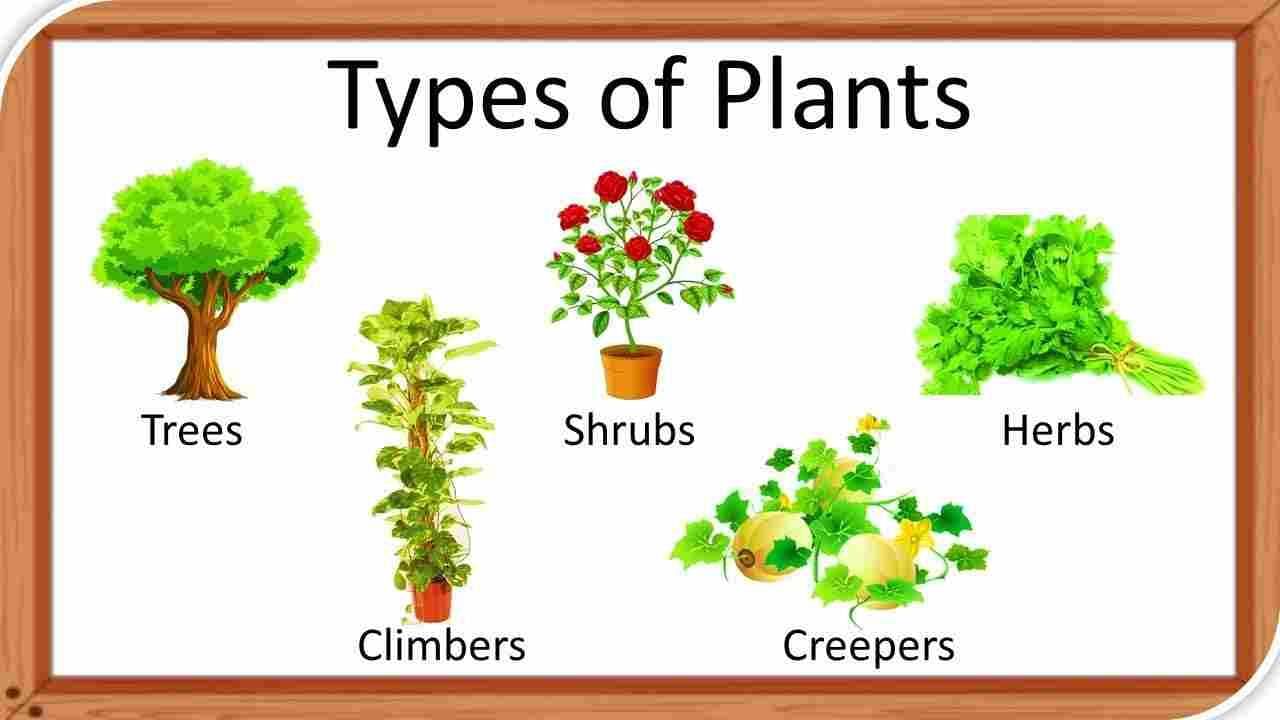 Types of Plants
Types of Plants
Q3: What are herbs?
Ans: Herbs are plants with green and tender stems. They are generally shorter in height compared to shrubs and trees.
Q4: Stem in shrubs is ______________.
Ans: Hard
The stem in shrubs is hard. This refers to the fact that shrubs have woody stems, providing structural support.
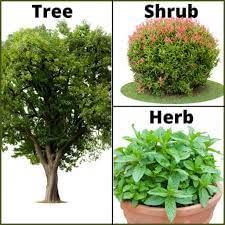 Tree, Shrub, Herb
Tree, Shrub, Herb
Q5: The stem in shrubs is not very thick. (TRUE/FALSE)
Ans: True
While shrubs have hard stems, they are not necessarily very thick compared to the stems of trees.
Q6: Herbs are __________in height.
Ans: Short
Herbs are short in height. Imagine the little plants in your garden like parsley or thyme. They don't grow very tall; they stay close to the ground.
Q7: What kind of stem trees have?
Ans: Trees have hard and thick brown stems. The thick and sturdy stems of trees provide support for their tall structures.
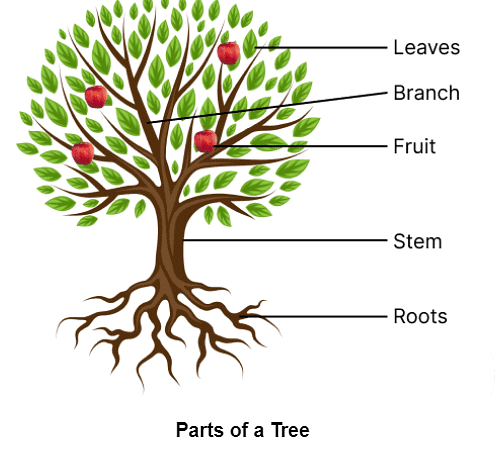 Parts of a TreeQ8: Trees are ___________ in height.
Parts of a TreeQ8: Trees are ___________ in height.
Ans: Tall
Trees are tall in height. They are distinguished by their significant height and the presence of a main trunk.
Q9: Give an example of any herb.
Ans: Tomato
An example of an herb is a tomato plant. You might have seen or eaten tomatoes. The plant that produces tomatoes is not very tall, and its stems are soft and green. That's why it's an herb.
Q10: The plants with weak stem that cannot stand upright and spread on ground are called ___________.
Ans: Creepers
These are called creepers. Imagine plants like watermelon or pumpkin. They don't stand up tall; instead, they have weak stems that spread on the ground. They 'creep' along the soil.
 Creepers
Creepers
Q11: Give an example of a shrub.
Ans: Lemon
An example of a shrub is a lemon plant. Picture a lemon tree in a garden. It's not as tall as some trees, and it has a bushy appearance. The woody stems make it a shrub.
Q12: Plants take support on neighbouring structure and climb up are called
Ans: Climbers
These are called climbers. Think of plants like a money plant. Instead of standing on their own, they use other things, like a wall or a trellis, to climb up and grow.
Q13: Give two examples of tree.
Ans: Mango and banyan
Trees typically have a single main stem, considerable height, and a well-defined canopy.
Mango trees give us delicious mango fruits, and banyan trees have those cool roots that drop down from their branches.
Q14: ___________ conducts water in plants.
Ans: Stem
Stem conducts water in plants. It serves as a transport system for water, nutrients, and sugars throughout the plant.
Q15: __________absorbs water and minerals from the soil.
Ans: Roots
Roots absorb water and minerals from the soil. They anchor the plant and play a crucial role in nutrient uptake.
Q16: The water and minerals go to all parts of plant through narrow tubes inside stem.(TRUE/FALSE)
Ans: True
The transport of water and minerals through narrow tubes inside the stem is facilitated by the plant's vascular system.
 Plant Vascular System: Xylem and Phloem
Plant Vascular System: Xylem and Phloem
Q17: The part of leaf through which it is attached to the stem is ____________.
Ans: Petiole
The part of the leaf through which it is attached to the stem is called the petiole. It's like the leaf's little stem that connects it to the main plant stem.
Q18: What is leaf venation?
Ans: Leaf venation refers to the pattern formed by veins in a leaf. It can be parallel, reticulate, or palmate, among other types.
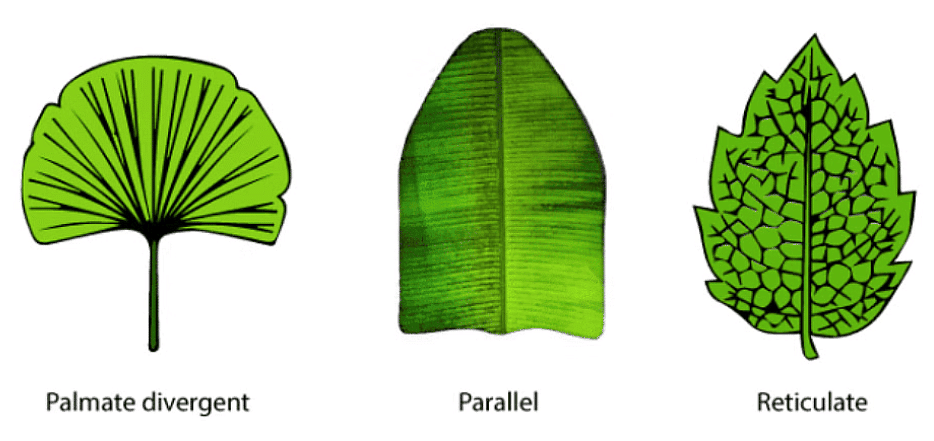 Leaf Venation
Leaf Venation
Q19: In photosynthesis __________gas is given out.
Ans: Oxygen
In photosynthesis, oxygen gas is given out. Plants are like little factories that make their own food, and oxygen is a byproduct that they release into the air.
Q20: What is the broad green part of leaf called?
Ans: The broad green part of a leaf is called the lamina. It is the main photosynthetic surface of the leaf. It's the big, flat part of the leaf where most of the action happens during photosynthesis.
Q21: What is transpiration?
Ans: Transpiration is the process by which water vapor is released from the stomata of plant leaves into the atmosphere.
Q22: The lines in the leaf are called________ and the thick vein in the middle of leaf is called ___________.
Ans: Veins, midrib
The lines in the leaf are called veins, and the thick vein in the middle of the leaf is called the midrib. Imagine the leaf as a map, and the veins are like roads that carry water and nutrients throughout the leaf. The midrib is like the main highway running down the center of the leaf, providing support and structure.
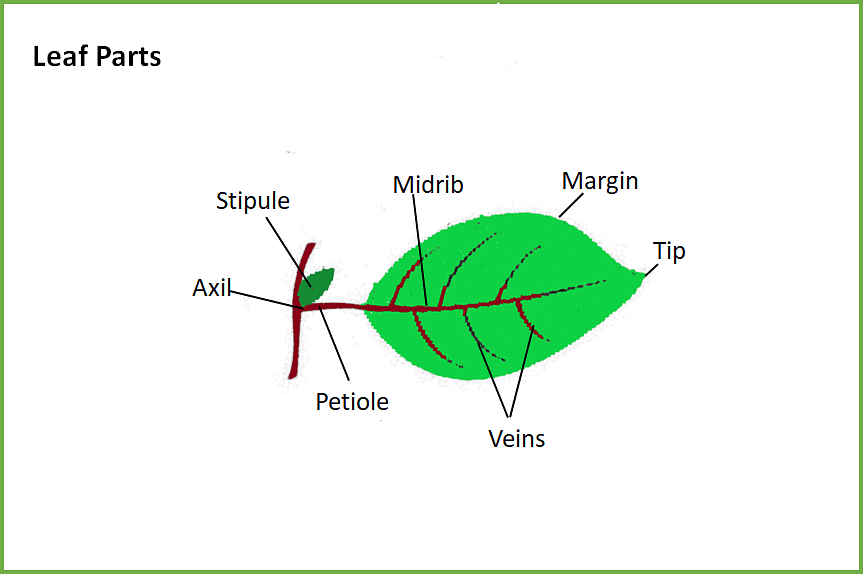 Parts of Leaf
Parts of Leaf
Q23: Give an example of climbers.
Ans: An example of climbers is the money plant. Climbers use external support to climb and grow.
Q24: Give an example of a leaf which shows parallel venation.
Ans: Wheat
An example of a leaf that shows parallel venation is wheat. In such leaves, the veins run parallel to each other. This pattern helps the leaf efficiently transport water and nutrients.
Q25: In which part of plant photosynthesis takes place?
Ans: Leaves
Photosynthesis takes place in the leaves of the plant, specifically in the chloroplasts. Think of the leaves as the kitchen where the plant prepares its food using sunlight, water, and carbon dioxide.
Q26: The leaves lose water in the environment through _________.
Ans: Transpiration
The leaves lose water in the environment through transpiration. This is a crucial process for nutrient transport and cooling of the plant.
Q27: Name the different types of roots.
Ans: The different types of roots include taproot and fibrous root.
Q28: Some plants have a main root called __________ and smaller roots called ________.
Ans: Tap root, fibrous roots
Taproot is the main root that goes deep into the ground, and fibrous roots are a bunch of smaller roots spreading out like a net.
Q29: Give one example of a flower with joined sepals and one with separated sepals.
Ans: Hibiscus and Jasmine.
An example of a flower with joined sepals is hibiscus. Imagine the sepals (the green parts at the base of the flower) joined together like friends in a group hug. An example of a flower with separated sepals is jasmine, where the sepals are not joined but separate from each other.
Q30: Name any four parts of a flower.
Ans: Four parts of a flower include petals, sepals, pistils, and stamens.
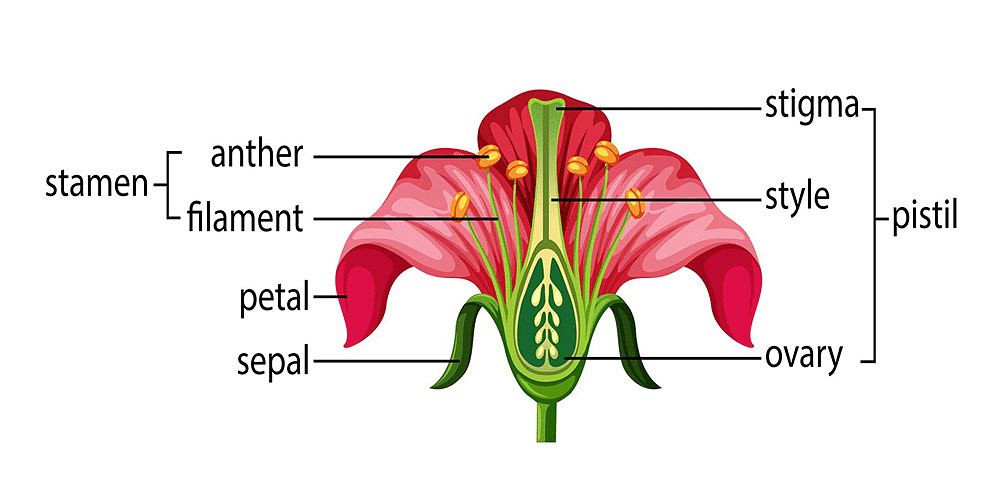 Parts of Flower
Parts of Flower
- Petals: These are the colorful outer segments of a flower.
- Sepals: Sepals are protective structures located at the base of the flower.
- Pistil: The pistil is the central part of the flower, consisting of the stigma, style, and ovary.
- Stamens: Stamens are reproductive structures that produce pollen.
Q31: What are the parts of stamen?
Ans: The parts of the stamen are the anther and filament.
- Anther: The anther is the part of the stamen that produces pollen.
- Filament: The filament is a slender structure that supports the anther.
Q32: Sepal is a part of ___________.
Ans: Flower
Sepals are a part of the flower, forming the outermost whorl of floral parts. They protect the flower during its budding stage.
Q33: The roots which do not have any main root are called __________.
Ans: Fibrous roots.
Roots without a prominent main root are known as fibrous roots. They spread out in a network, efficiently absorbing water and nutrients from the soil.
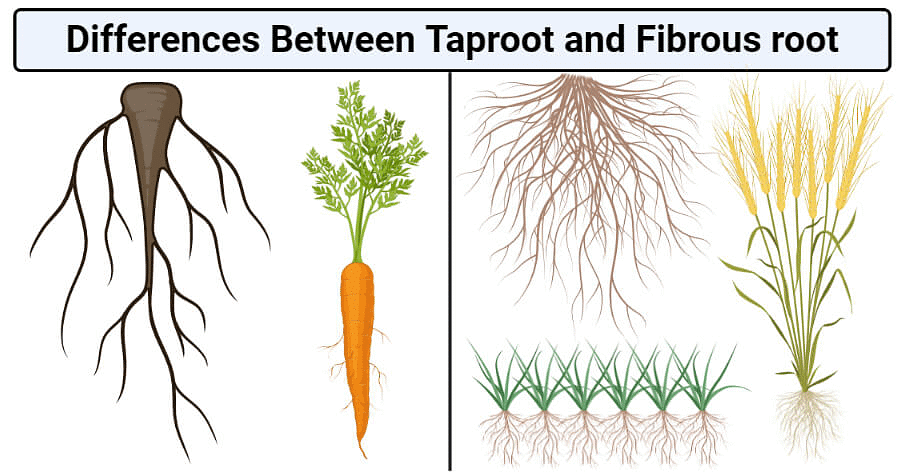 Tap and Fibrous RootQ34: Pistil and stamen are parts of a flower. (TRUE/FALSE)
Tap and Fibrous RootQ34: Pistil and stamen are parts of a flower. (TRUE/FALSE)
Ans: True
Both the pistil and stamen are essential reproductive parts of a flower. The pistil is the female organ, while the stamen is the male organ, contributing to the plant's reproduction.
Q35: The innermost part of the flower is called __________.
Ans: Pistil
The innermost part of the flower is called the pistil. It encompasses the stigma, style, and ovary, playing a central role in reproduction.
Q36: Transpiration and photosynthesis take place in roots and leaves, respectively. (TRUE/FALSE)
Ans: False
Transpiration primarily occurs through tiny pores in the leaves, while photosynthesis, the process of making food, also takes place in the leaves.
Q37: Style and stigma are parts of __________.
Ans: Pistil
Style and stigma are parts of the pistil, contributing to the reproductive process. The style connects the stigma to the ovary.
Q38: The number of petals, stamens and sepals are different in different flowers. (TRUE/FALSE)
Ans: True.
True. Flowers exhibit diversity in the number of petals, stamens, and sepals, making each flower unique.
Q39: What is the innermost swollen part of the pistil called?
Ans: Ovary
The innermost swollen part of the pistil is called the ovary. It serves as the container for developing seeds.
Q40: Transpiration takes place in the leaf. (TRUE/FALSE)
Ans: True
Transpiration, the release of water vapor, primarily occurs in the leaf, aiding in the plant's cooling and nutrient transport.
FAQs on Class 6 Science Chapter 4 Question Answers - Getting to know plants
| 1. What are the different parts of a plant and their functions? |  |
| 2. What is photosynthesis and why is it important for plants? |  |
| 3. How do plants reproduce? |  |
| 4. What is the role of flowers in plant reproduction? |  |
| 5. How do plants adapt to their environments? |  |

















